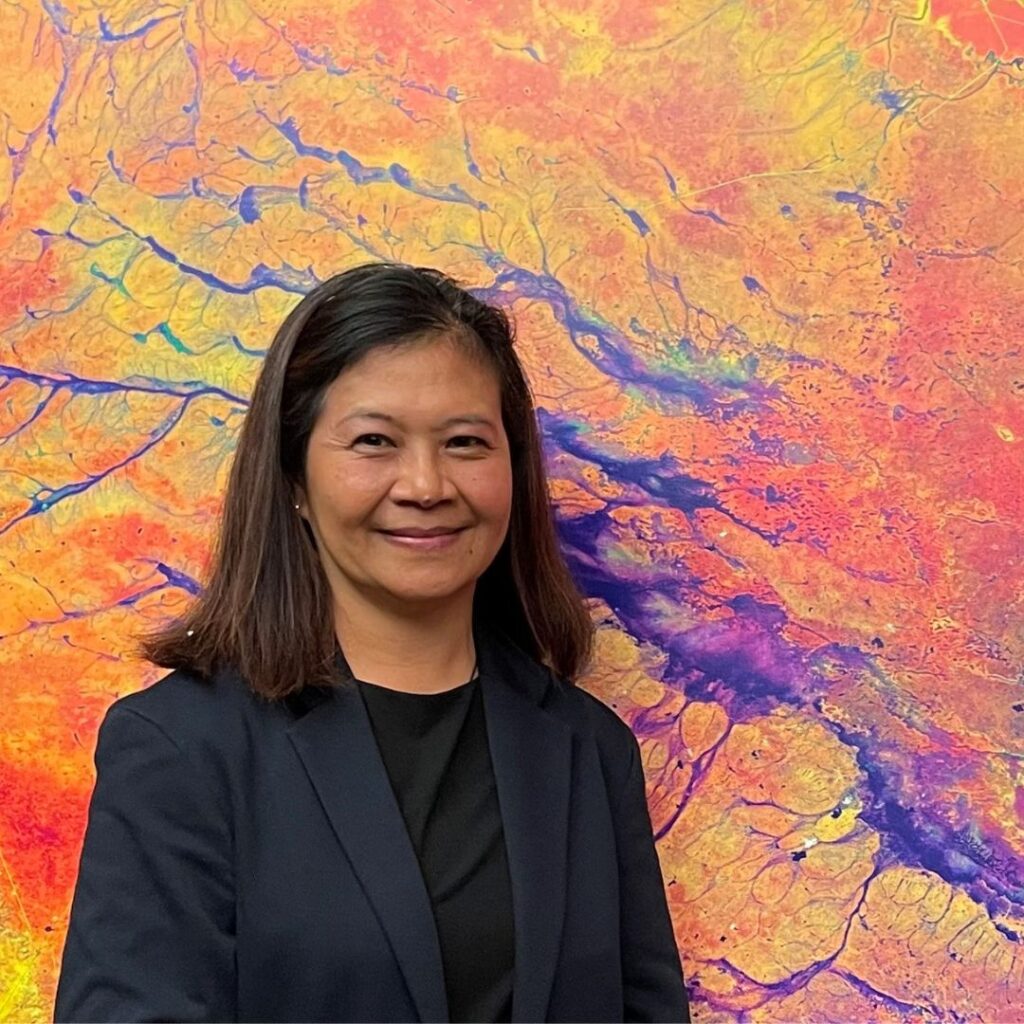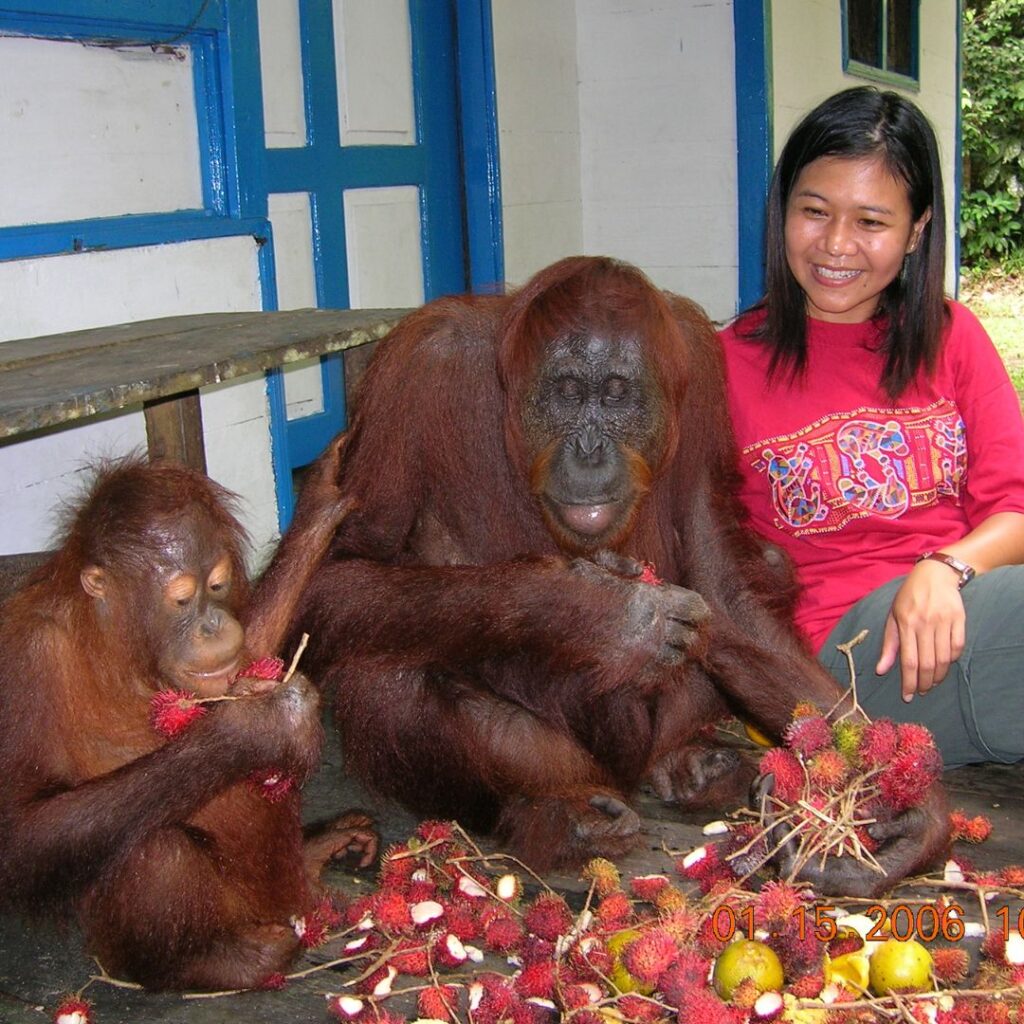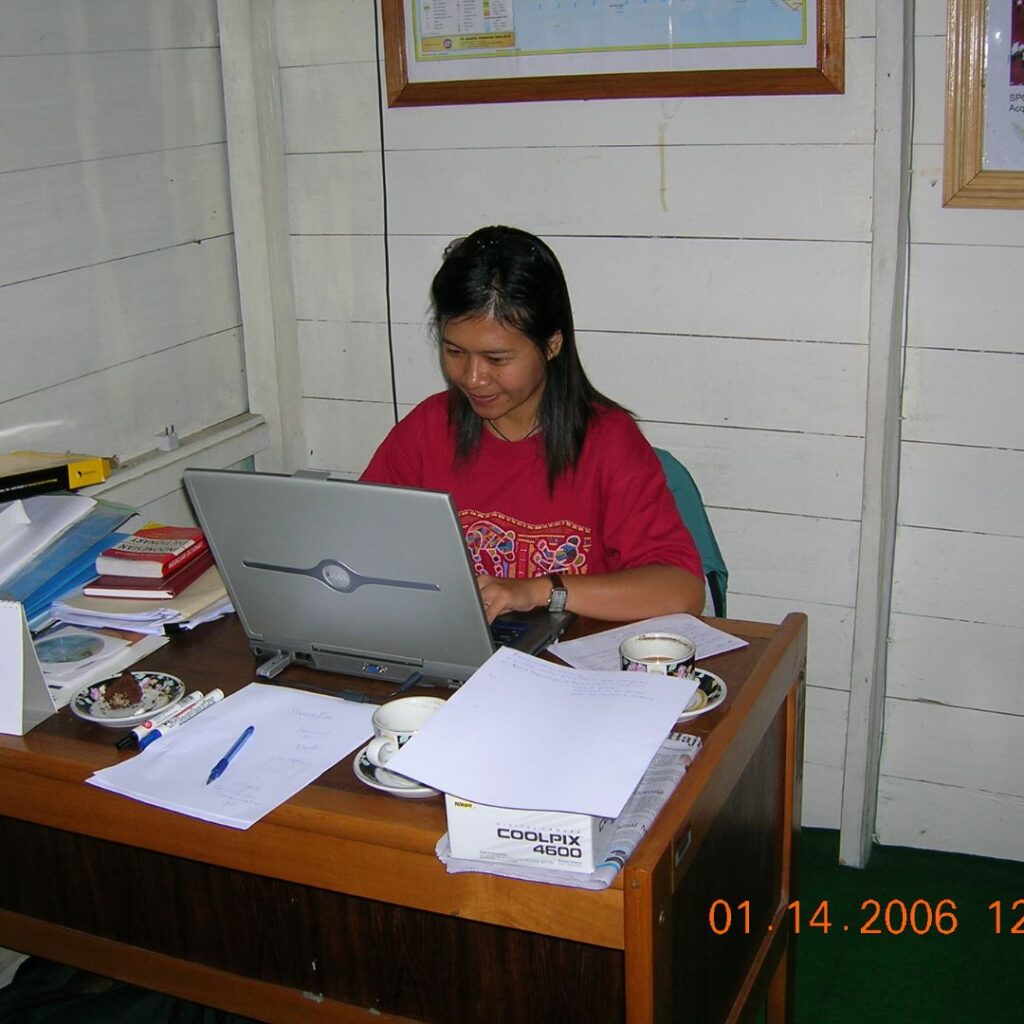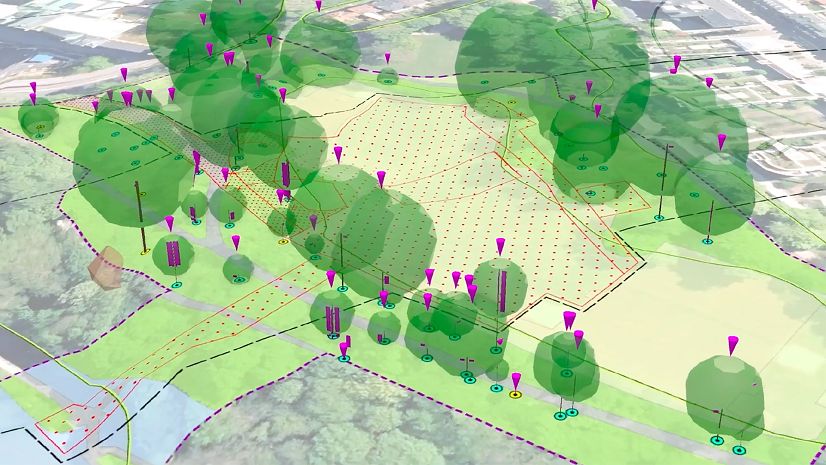Spectral Profiles is an interview-style blog series dedicated to showcasing the diverse ways in which imagery and remote sensing are used across various fields. Whether you’re a PhD-level scientist deeply embedded in remote sensing or someone who occasionally utilizes satellite or drone images in your work, your story is valuable to us.
Profile Feature: Canserina, Kurnia
Canserina Kurnia is a senior solution engineer with the Esri education team, based in Redlands, California. Her main role is to provide technical assistance in advancing GIS and remote sensing technology for teaching, research, and campus administration using Esri technology. She leads imagery and remote sensing outreach for higher education institutions.

Education and Career
Q: How did you get involved with imagery and remote sensing?
I was first introduced to imagery and remote sensing during my master’s degree in landscape planning. My initial exposure to imagery and remote sensing was from a required course in my master’s program called, Remote Sensing Applications. Through this course I discovered that studying our planet through imagery and the insights it offers was captivating. During this period, I also enrolled in Principles of GIS and Advanced GIS courses. I learned how imagery and remote sensing and GIS are interconnected and can be used together. In the lab, we practiced selecting a location for building a solar panel farm, involving both imagery and GIS data to fulfill the criteria. My interest in remote sensing technology grew so significantly that I decided to use remotely sensed data and GIS to develop a method to quantify vegetation density in an urban area of Sydney as my final project.
Upon completing my master’s degree, I decided to choose a career that leverages remote sensing and GIS technologies. I joined Esri South Asia as a GIS consultant stationed in Indonesia, participating in various projects, including forestry mapping and management, and addressing environmental challenges like deforestation and forest fires, all of which heavily rely on remotely sensed data. I also actively assisted Orangutan Foundation International in conserving the habitats of endangered orangutans in Borneo. Landsat images of the region reveal how deforestation, fires, mining operations, and agricultural activities have transformed and continue to threaten orangutan habitats.
My passion for imagery and remote sensing has continued throughout my career. Today, I enjoy working with educators and researchers as they play a crucial role in shaping the future workforce and driving innovation.

Q: What degrees, classes, or certificates were instrumental in your career?
I hold a bachelor’s degree in landscape architecture from the Faculty of Agriculture at Bogor Agricultural University in Indonesia. I also hold a master’s degree in landscape planning from the University of New South Wales in Sydney, Australia.
When I was pursuing my master’s degree utilizing remote sensing and GIS data and tools was far more challenging than it is today. Back then I would spend countless hours in the lab working with workstations and using Unix as the operating system. Image processing often took several days to complete. When I compare that to the present, I am amazed at how much technology has advanced. What once took me months to accomplish can now be finished in just a couple of weeks. There is exciting new data that is available and easier to access, along with smarter tools to use. Today’s students are indeed very lucky.
Q: Who or what inspired you in your educational journey?
My studies in landscape planning introduced me to the practical uses of remotely sensed and GIS data. I am inspired by how these technologies can be applied to address real-world problems.

The Future of Imagery and Remote Sensing
Q: What skills have been most useful in your work, and what skills do you look for in employees?
It’s essential to be familiar with imagery and remote sensing technology and stay up-to-date to understand its potential. This means engaging in self-learning outside of school or work. In remote sensing, there are numerous new sensors across various modalities and resolutions that offer massive amounts of data. Additionally, new methods and tools, such as GeoAI, are emerging. These new advancements in imagery and remote sensing technology are exciting and require students and professionals alike to stay updated.
It’s also important to know how to apply the technology to solve problems. Problem-solving is an important skill that must be paired with knowledge of the technology, including how to use the tools, find, choose, and prepare the data, understand the workflow, and communicate effectively. Understanding data and analysis requirements is also crucial for providing accurate recommendations to users. Often, there are multiple ways to accomplish a task, but it’s critical to determine which method meets the needs most efficiently and cost-effectively.
Q: How does imagery and remote sensing change the way you see the world?
Imagery has become part of my daily life because of its increased accessibility. It plays a crucial role in keeping the public informed, from tracking approaching storms and other natural disasters to illustrating their impacts, like those caused by hurricanes and wildfire. Combining imagery with GIS data provides more detailed insights and comprehensive information for decision-makers and the general public. A good example is the one shown in this Wildfire Aware web app.
Q: What is your advice for someone new to the field of imagery and remote sensing who is interested in learning more about it?
Start learning by exploring imagery data related to a topic that interests you, such as weather or natural phenomena like hurricanes, air pollution, or wildfire, and the area surrounding where you live. There are ready-to-use apps, serving imagery data, infused with other data, perfect for starting exploration and discovery. Most of these apps are hosted online, such as at ArcGIS Living Atlas of the World, and offer free access without requiring installation or sign-in.
Once you gain some familiarity with various types of imagery from different sensors, you may consider taking remote sensing application courses or training. You can also do self-study by taking some web tutorials such as the one provided by Learn ArcGIS.
Continue your learning journey at the level and pace that suits you. In today’s world, numerous Earth observation imagery is accessible to everyone.



